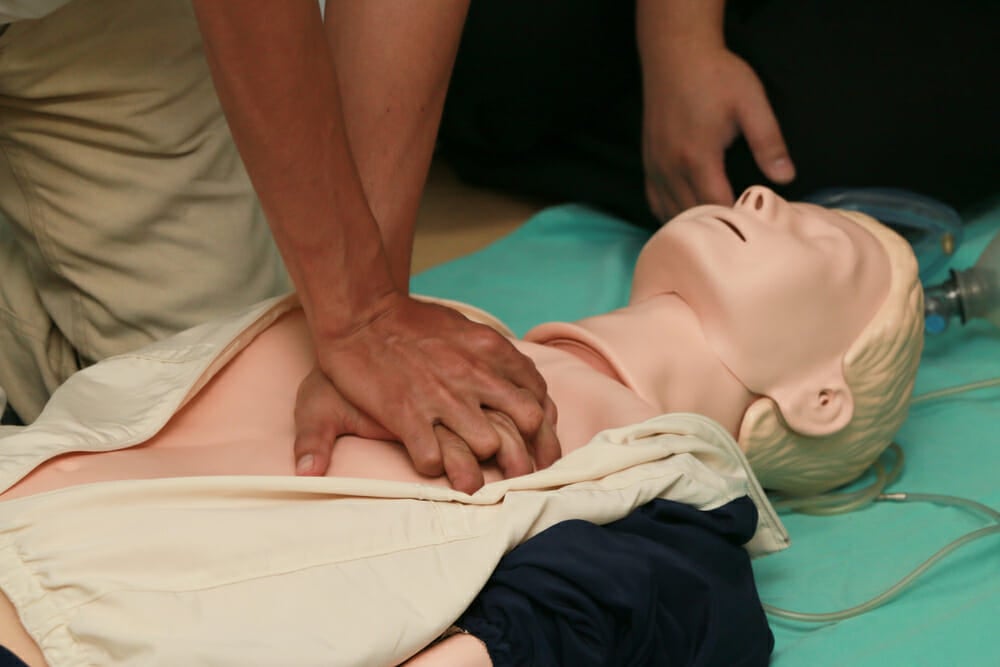
Last Updated On: enero 7, 2025
Chest compressions are a cornerstone of effective CPR (Cardiopulmonary Resuscitation), playing a critical role in preserving life during cardiac arrest emergencies. This guide explains how chest compressions work and their impact on the body’s blood flow mechanism.
Most CPR first aid online classes today put chest compressions before mouth to mouth resuscitation. This is because of the importance of chest compressions in the entire CPR process. Let’s find out in detail how chest compressions save a life.
Chest compressions mimic the heart’s natural pumping action, helping maintain blood flow to vital organs, especially the brain and heart, when the heart has stopped beating effectively. Without adequate blood circulation, irreversible organ damage and death can occur within minutes.
In order to fully comprehend the mechanism of blood flow through chest compressions, it is important to know how various types of blood vessels in the bodywork. There are three basic types of blood vessels in our body — capillaries, veins, and arteries.
When the chest is pressed two inches deep during chest compression in CPR, it squeezes the blood out of the person’s tissues. This blood can enter both the arteries and veins. However, when it enters the veins it cannot go back due to the valves. With repeated compressions, enough pressure develops to carry the bloodstream to the heart which again has valves. Thus, blood from the heart can come back to the heart only after it has supplied oxygen to all the body and comes back through the vein following the same previous route.
Between every two compressions, the chest is allowed to recoil i.e. raise again to its original position. This recoiling is important because if only the squeezing part is done, the heart will not be able to suck up the blood. As the squeezed tissues are released they soak up some blood and the same goes for the heart’s tissues. They soak some blood and that’s how they keep functioning.
If chest compressions are properly performed, they are without any doubt the most important component of the CPR procedure. Even in many cases they alone can save a person’s life because the reserve oxygen in the blood can be supplied easily to the brain through compressions to avoid brain death.
Chest compressions are a life-saving intervention, sustaining blood flow during cardiac arrest until advanced medical help arrives. Mastering proper technique and understanding the blood flow mechanism behind compressions are crucial for effective CPR which can be easily achived by online cpr courses. Whether you’re a healthcare professional or a bystander, knowing how to perform high-quality chest compressions can make the difference between life and death.

